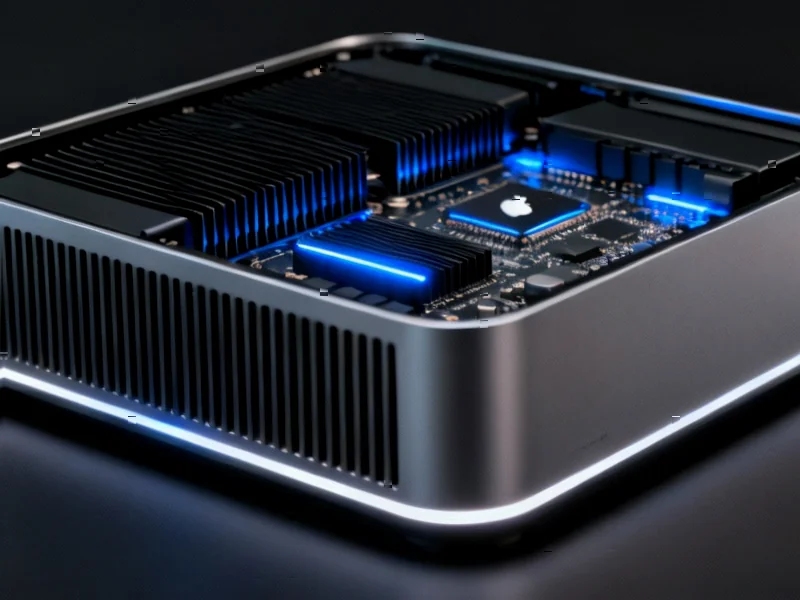In what could represent a significant advance in critical care monitoring, researchers have reportedly developed a deep learning system that identifies potentially dangerous ventilator circuit events in real time. The technology analyzes waveform patterns from mechanical ventilators to detect fluid accumulation and circuit leaks that often go unnoticed until they trigger alarms or cause complications.
Table of Contents
The Hidden Danger in ICU Ventilation
According to the study findings, fluid accumulation patterns were surprisingly common among ICU patients receiving invasive mechanical ventilation. Sources indicate that more than three-quarters of patients—77.1%—exhibited at least one such event during monitoring. This high frequency suggests that what many clinicians might consider occasional nuisance events could actually represent a persistent, underrecognized threat to patient safety.
Analysts familiar with the research note that the problem stems from fundamental aspects of how modern ventilators operate. When patients are connected to mechanical ventilator systems, they bypass the natural humidification of the upper respiratory tract. Heated humidifiers used to compensate for this loss inevitably produce condensation as warm gases meet cooler ambient conditions in the circuit. While previous studies had documented condensate accumulation rates around 30 mL per hour, the real-world clinical impact has been difficult to quantify until now.
Beyond Nuisance: The Infection Connection
What makes these findings particularly concerning, according to reports, is the connection between circuit fluid and infection risk. The accumulated condensate can become a bacterial reservoir, with studies showing up to 80% of samples containing high-density bacterial growth after 24 hours. Commonly isolated organisms include dangerous Gram-negative bacilli like Acinetobacter baumannii and Pseudomonas aeruginosa—both frequent culprits in ventilator-associated events.
The data appear to support this concern. In the study cohort, patients with fluid-accumulation-like patterns developed ventilator-associated events at nearly three times the rate of those without such patterns. This suggests that contaminated condensate being inadvertently introduced into the lower respiratory tract during routine procedures like suctioning or circuit manipulation could be contributing to infections that prolong ICU stays and increase mortality.
Meanwhile, the mechanical consequences are equally troubling. Reports indicate that fluid accumulation was associated with airway pressure increases reaching up to 23 cmH₂O—a significant elevation that reflects increased breathing effort and reduced tidal volume delivery. These pressure spikes can disrupt the delicate synchrony between patient and machine, potentially increasing sedation requirements and complicating weaning efforts.
Technical Breakthrough in Real-Time Detection
The research team apparently chose the YOLOv8 architecture specifically for its real-time computing capabilities and precision in detecting small anomalies. Unlike traditional two-stage detection models, this single-stage approach provides significantly faster inference speeds—critical for time-sensitive clinical applications where every second counts.
Performance metrics from validation studies show the algorithm achieving precision consistently above 99%, with F1 scores exceeding 92% across all event types. While recall for fluid-accumulation patterns was slightly lower in external validation, it remained above 85%—still considered clinically acceptable given the high precision that minimizes false alarms and unnecessary interventions.
Perhaps most impressively, the complete system latency—from image capture through processing to display—reportedly stays below 500 milliseconds. That’s significantly faster than a typical respiratory cycle of 2-5 seconds, meaning the system can provide multiple detection opportunities within each breath cycle to prevent missed events.
Practical Advantages for Clinical Settings
What sets this approach apart from previous efforts, according to analysts, is its practical deployment advantages. The video-based method allows compatibility across different ventilator models without requiring complex interface integration. This means hospitals could potentially implement the technology with simple bedside camera setups rather than expensive proprietary software or hardware modifications.
The approach also demonstrates remarkable robustness across diverse patient populations. The algorithm was intentionally trained on a clinically heterogeneous cohort including patients with ARDS, pneumonia, and postoperative respiratory failure. Its strong performance across these varied conditions suggests the model learned core visual features of target events independent of the underlying disease state—a crucial characteristic for widespread ICU adoption.
Limitations and Future Directions
Industry observers caution that several limitations need addressing before widespread clinical implementation. The algorithm’s labels were based on expert visual interpretation of waveform patterns rather than concurrent physiological confirmation of actual fluid presence. This means some detected patterns could potentially arise from other phenomena like cardiogenic oscillations or patient effort rather than genuine circuit fluid.
Additionally, the current model was validated only in pressure-controlled and pressure-support ventilation modes. Since waveform manifestations might differ in volume control ventilation, the technology would require additional training before being applicable to all ventilation strategies used in modern ICUs.
Looking forward, researchers suggest the framework could evolve into a comprehensive monitoring platform. The same pattern recognition approach could be extended to detect patient-ventilator asynchrony and other waveform anomalies, potentially creating a closed-loop system for circuit maintenance and ventilator-associated event prevention.
As one analyst familiar with the technology noted, “This represents more than just another monitoring tool—it’s potentially a paradigm shift in how we approach ventilator safety. Instead of reacting to alarms, we could move toward anticipating problems before they escalate into clinical emergencies.”
Related Articles You May Find Interesting
- New Brainwave Database Separates Touch Awareness from Task Response in Neuroscience Research
- Refurbished Surface Laptop 3 Emerges as Budget-Friendly Powerhouse for Modern Professionals
- Microsoft’s AI Copilot Gets Personality Boost with New ‘Mico’ Assistant
- Rivian Announces Second Round of Workforce Reductions Affecting 600 Employees
- Online Retail Surges as Gold and Tech Purchases Defy Economic Concerns



